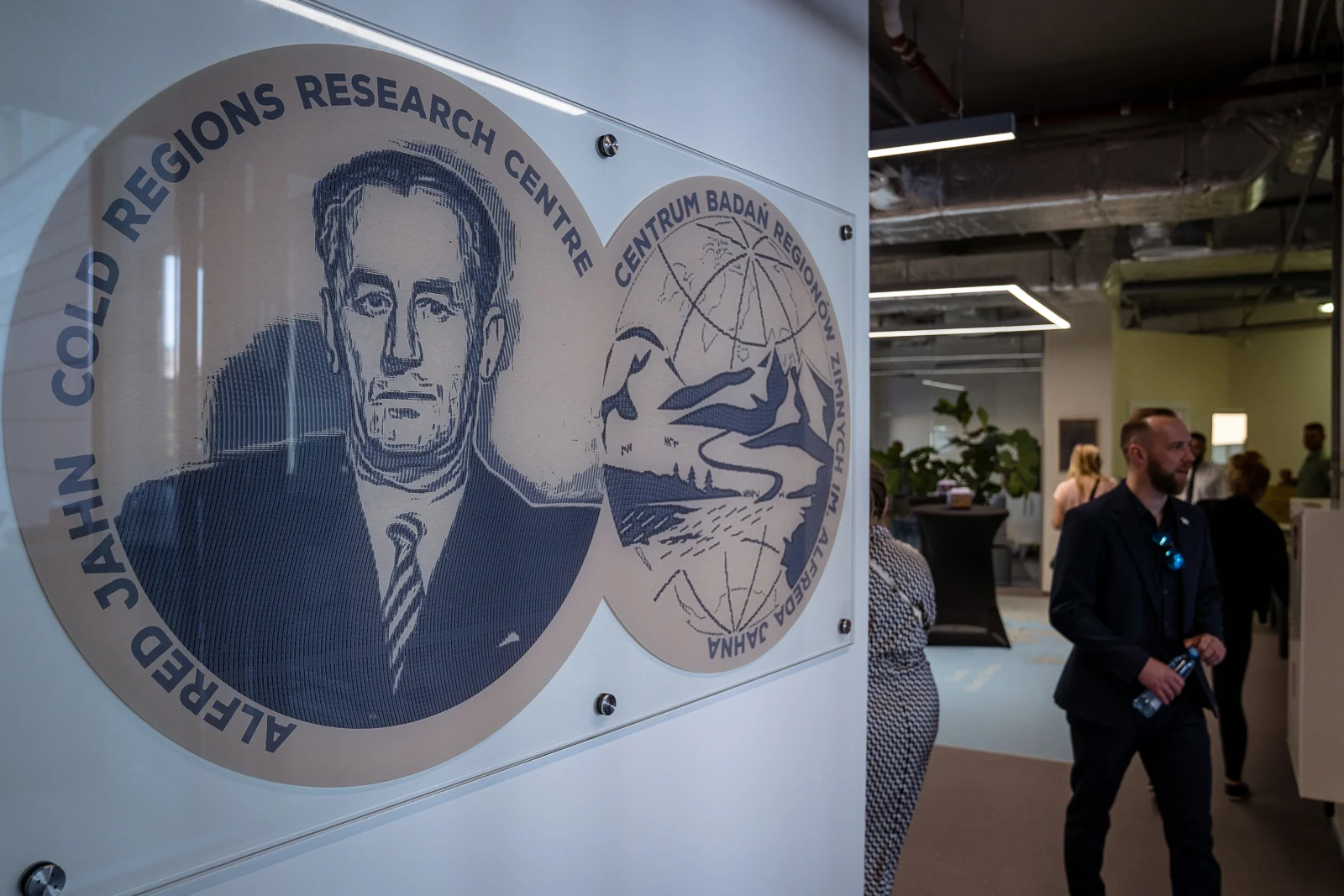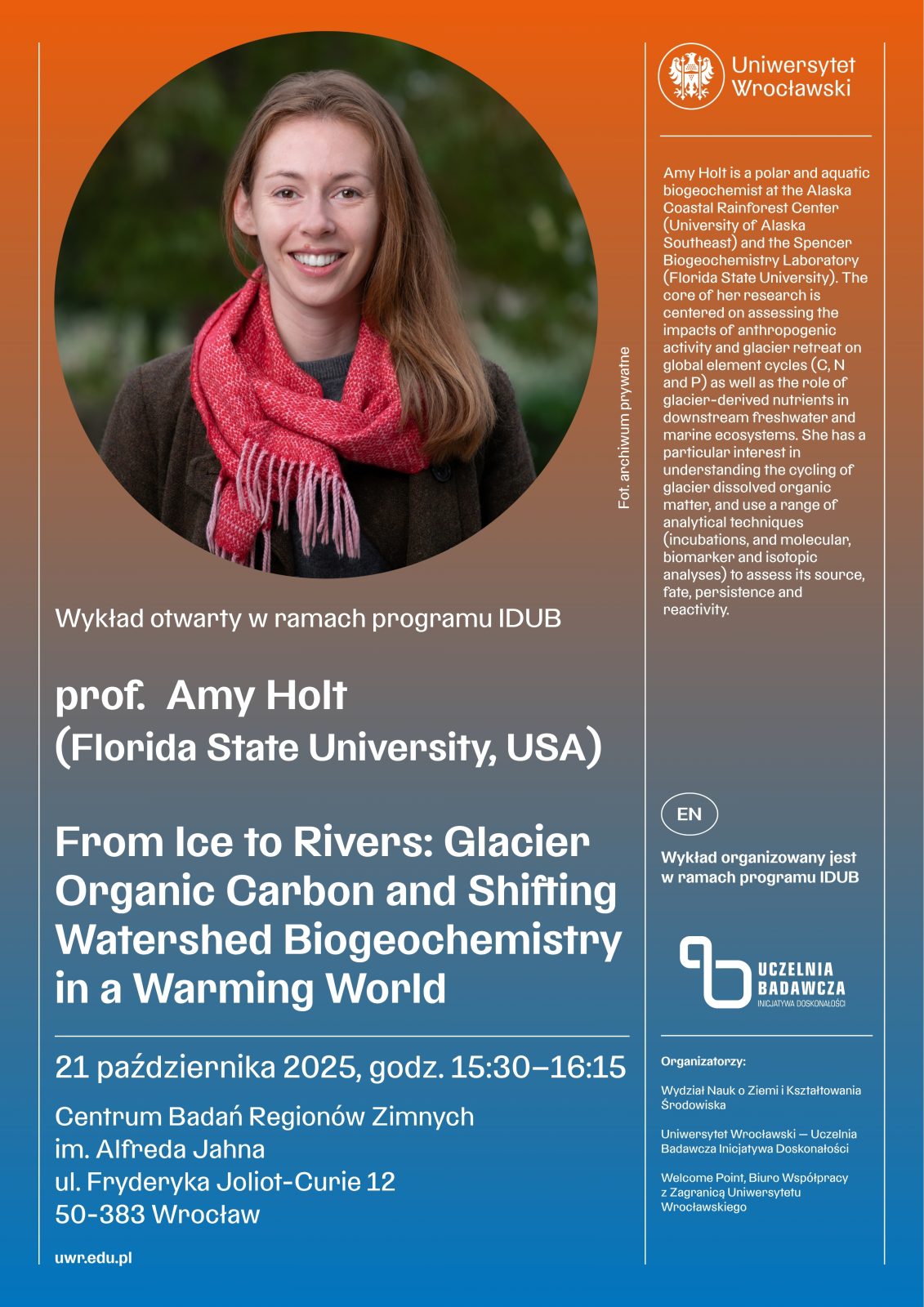
Wykład prof. Amy Holt w Centrum Badań Regionów Zimnych im. Alfreda Jahna
Instytut Geografii i Rozwoju Regionalnego Wydziału Nauk o Ziemi i Kształtowania Środowiska Uniwersytetu Wrocławskiego zaprasza na otwarty wykład prof. Amy Holt (Florida State University, USA) pt. From Ice to Rivers: Glacier Organic Carbon and Shifting Watershed Biogeochemistry in a Warming World.
Wykład, prowadzony w języku angielskim, odbędzie się we wtorek, 21 października 2025 r., w godz. 15:30–16:15 w siedzibie Centrum Badań Regionów Zimnych im. Alfreda Jahna, ul. Fryderyka Joliot-Curie 12, 50-383 Wrocław.
Prof. Holt będzie przebywać na Uniwersytecie Wrocławskim w ramach krótkiej wizyty realizowanej w programie IDUB.
Biogram
Amy Holt is a polar and aquatic biogeochemist at the Alaska Coastal Rainforest Center (University of Alaska Southeast) and the Spencer Biogeochemistry Laboratory (Florida State University). The core of her research is centered on assessing the impacts of anthropogenic activity and glacier retreat on global element cycles (C, N and P) as well as the role of glacier-derived nutrients in downstream freshwater and marine ecosystems. She has a particular interest in understanding the cycling of glacier dissolved organic matter, and use a range of analytical techniques (incubations, and molecular, biomarker and isotopic analyses) to assess its source, fate, persistence and reactivity.
O wykładzie
Runoff from rapidly melting glaciers is a dominant source of nutrients in many high-latitude and high-altitude ecosystems. In particular, glaciers export ancient, energy-rich, and highly bioavailable dissolved organic matter (DOM) to freshwater and marine ecosystems, influencing downstream carbon cycling and supporting food webs. Despite its importance and the sensitivity of mountain glaciers to climate change, the sources of organic matter underpinning glacier DOM composition and its high bioavailability are uncertain. This seminar will use ultrahigh resolution molecular-level data and a range of isotopic techniques to present a global gradient in glacier DOM composition, demonstrating that organic matter source varies across the glacier biome, driven in part by proximity to industrial centers and thus the relative balance of carbon derived from in situ microbial production and atmospheric deposition. It will highlight that in situ-derived organics may underpin the high bioavailability of glacier DOM and will draw on a decade of nutrient data from southeast Alaska to demonstrate how continued retreat may alter the quality, quantity, and variability of bioavailable carbon and nutrient fluxes to downstream ecosystems. Together this data underscores the dynamic role the glacier biome plays in the storage, cycling, and export of carbon, demonstrating that continued retreat will alter the consistency and properties of biogeochemical yields, with implications for food web dynamics and ecosystem services in receiving stream networks and coastal zones.

Data publikacji: 2.10.2025
Dodane przez: M.K.



